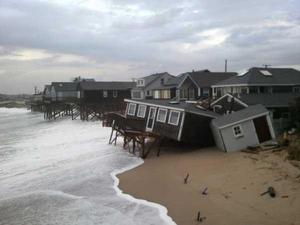 Everyone seems to want to live on the beach. As a result, coastal populations now make up 40% of the total population. Yet our nation’s coastal region only consists of 10% of the Country’s total land area.
Everyone seems to want to live on the beach. As a result, coastal populations now make up 40% of the total population. Yet our nation’s coastal region only consists of 10% of the Country’s total land area.
If current trends continue, the U.S. coastal population could reach 134 million in 2020, up from 123 million in 2010.
And while Americans continue to flock to the coasts, the costs of disasters increases with every household that moves there. That risk is also carried by the rest of the nation’s underwrites who asses that risk and offer insurance coverage.
Part of the reason why the National Flood Insurance Program is so far in debt is because over the last several decades our coastal areas have been repetitive targets for natural disasters. And the strength of those natural disasters have only increased.
In Florida alone over 16,000 properties have been lost, multiple times because of flooding; meaning the public has paid to rebuild them each time. However, its not just beach condos and waterfront homes, most of the population simply can’t afford to move, so they’re forced into the high risk areas, low-lying areas that see repeated flooding.
The population numbers and trends recently released by the U.S. Census Bureau should help guide policymakers who shape regulations governing coastal development.
But with hurricane season upon us, now is the time for all Floridians to start assessing their hurricane preparation plans. Especially for all Floridians that live on our beautiful coast line.